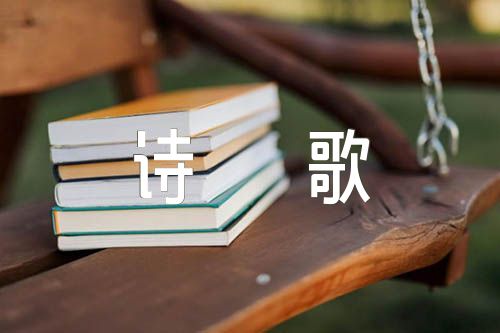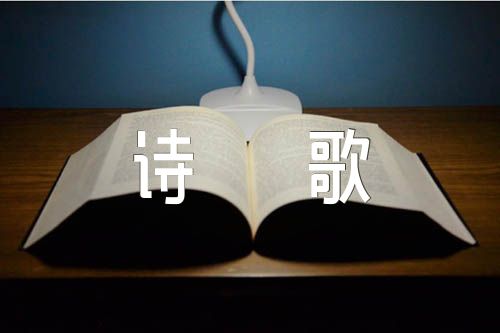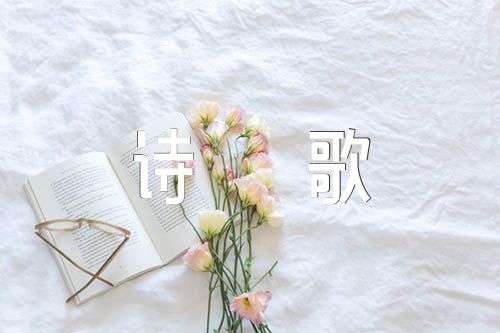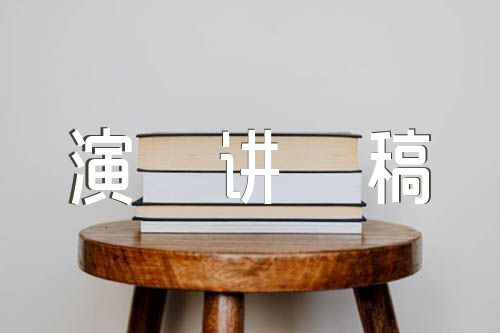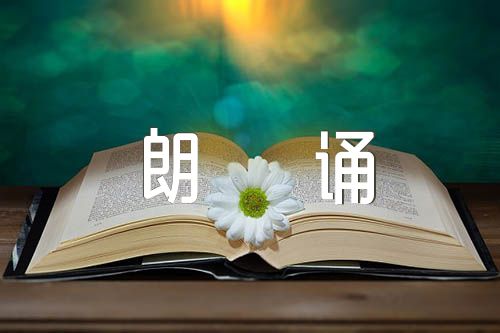【www.jianqiaoenglish.com--英语诗歌】
英语诗歌的格律
1.一首诗(a poem)往往包含有若干诗节(stanza或strophe),每节又分为若干行(line 或verse),每个诗行由若干音步(foot)组成,音步是由一定数目的重读音节(arsis或ictus)和非重读音节(thesis)按照一定规律排列而成。
音步的排列方式构成英诗的格律(meter 或 measure)。
2.依照每一音步中重读音节(扬)和非重读音节(抑)的排列方式,可以把音步分成不同种类,即格律。
常见的英语诗歌格律有四种。
a)抑扬格(Iambus; the Iambic Foot):一个音步由一个非重读音节加上一个重读音节构成。b)扬抑格(Trochee; the Trochaic Foot):一个音步由一个重读音节加上一个非重读音节构成。c)扬抑抑格(Dactyl):一个音步由一个重读音节加上两个非重读音节构成。d)抑抑扬格(Anapaest; the Anapaestic Foot):一个音步由两个非重读音节加上一个重读音节构成。
不常见的几种格律。
e)抑扬抑格(Amphibrach; the Amphibrachy Foot):一个音步由三个音节组成,其中第一、三个音节为非重读音节,第二个音节为重读音节。f)扬扬格(Spondee):一个音步由两个重读音节构成。g)抑抑格(Pyrrhic):一个音步由两个非重读音节构成。
3.音步也有完整和不完整之分。诗行中每个音步的格律都相同,则为完整音步(actalectic foot);如果诗行最末一个音步缺少一个音节,则为不完整音步(cactalectic)。
4.诗的各行音步数目不定,诗行按音步数量分为以下几种:
一音步(monometer)二音步(dimeter)三音步(trimeter)四音步(tetrameter)五音步(pentameter)六音步(hexameter)七音步(heptameter)八音步(octameter)
超过八音步的诗行在英语诗歌中较为少见。
5.音步的数目与格律结合起来,又可进一步细分为许多小类,如抑扬格一音步(iambic monometer),扬抑格一音步(trochaic monometer),抑抑扬格三音步(anapaestic trimeter),扬抑格四音步(trochaic tetrameter),抑扬格五音步(iambic pentameter),扬抑格六音步(trochaic hexameter)等。
从音步数目上看,三音步、四音步和五音步最为常见,尤其是抑扬格五抑,如十四行诗体(sonnet)、英雄双行体(heroic couplet)、素体诗或无韵诗(blank verse)等均以抑扬格五音步的诗行写成。
Basic Elements for Poetic Appreciation
I. Prosodic system of poetry诗歌的音律系统
1. Meter / Rhythm
1). Meter / Rhythm is a regular pattern of stressed and unstressed syllables in a line of verse.
2). Foot (音步): the smallest unit of rhythm in a line of poem containing one stressed syllable and one or more unstressed syllables.
3). The following are several frequent metrical feet:
*Iambus(抑扬格): a metrical foot of two syllables, one short (or unstressed) and one long (or stressed).
*Trochee (扬抑格): a metrical foot of two syllables, one long (or stressed) and one short (or unstressed).
*Dactyl (扬抑抑格): a metrical foot of three syllables, one long (or stressed) followed by two short (or unstressed).
*Anapest (抑抑扬格): a metrical foot of three syllables, two short (or unstressed) followed by one long (or stressed)
4). Types of meters
*Monometer(单音步诗) a line of poetry that has one metrical feet.
*Diameter (双音步诗) a line of poetry that has two metrical feet.
*Trimeter(三音步诗) a line of poetry that has three metrical feet.
*Tetrameter(四音步诗): a line of poetry that has four metrical feet.
*Pentameter(五音步诗): a line of poetry that has five metrical feet.
*Hexameter(六音步诗): a line of poetry that has six metrical feet.
*Heptameter(七音步诗): a line of poetry that has seven metrical feet.
*Octameter(八音步诗) a line of poetry that has eight metrical feet.
2. Rhyme
1). Rhyme is the repetition of sounds in two or more words that appear close to each other in a poem.
2). There are two types of rhyme:
a. Internal rhyme (行间韵): is rhyme that occurs within a line.
*Alliteration (头韵) is the repetition of initial consonant sounds in two or more words in a line.
*Assonance (腹韵) is the repetition of vowel sounds in a line ending with different consonant sound as in
* Consonance (假韵) is the repetition of similar consonant sounds, especially at the ends of words, as in lost and past or confess and dismiss.
b. End rhyme (尾韵): is rhyme that occurs at the ends of lines.
*Perfect rhyme (完全韵) is rhyme in which the final vowels (and consonant sounds) are identical, but with different initial consonant sounds, such as stay / play , fate / late.
*Imperfect rhyme (不完全韵) is rhyme in which only the final consonant sounds are identical, the rhymed vowels and even the consonants might be similar but not identical, e.g. groaned and ground.
* Eye rhyme (视韵)is rhyme in which words are spelled alike but not pronounced alike, such as wind/kind.
3). Rhyme scheme (韵式)
a. Rhyme scheme is the pattern of rhymes in a poem.
b. There are three basic rhyme schemes:
*Running rhyming scheme (连续韵): Two neighboring lines are rhymed. (aabb)
*Alternate rhyming scheme (交叉韵): Poems are rhymed every other line. (abab)
*Inclosing rhyming scheme (首尾韵): The first and the fourth lines are rhymed. (abba)
II. Semantic system of poetry 诗歌的意义系统
1. Image –the soul of the meaning of a poem
The best way to appreciate a poem is to understand the meaning that the images convey in the poem.
1). Image refers to the words that trigger our imagination to recall or to recombine memory of mental pictures.
2). Types of images
a. According to our senses, images can be divided into the following types:
*visual image视觉意象
*auditory image听觉意象
*olfactory image嗅觉意象
*tactile image触觉意象
*gustatory image味觉意象
b. In terms of relationship between senses and objects, image can also be classified into two basic types:
*literary image字面意象
*figurative image比喻意象
3). The purpose of employing images
a. to stimulate the reader’s senses.
b. to activate the reader’s sensory or emotional experience.
c. to involve the reader in the creation of the poem with his personal and emotional experience.
d. To strike the chord of the reader.引起读者共鸣
2. The means of expressing meaning—figures of speech
1). Comparison
*simile明喻
*metaphor 暗喻
*conceit奇喻
2). Personification拟人
3). Symbolism 象征
4). Hyperbole 夸张
5). Allusion 典故
6). Pun 双关
7). Metonymy (借代): the use of the striking characteristic of a person or object to represent the whole person or the thing.
8). Apostrophe呼语: the direct address of an absent or imaginary person or of a personified abstraction
9). Synaesthesia (通感): the transformation of one sense to another sense.
III. Divisions of poetry
1. Stanza: Two or more lines of poetry that together form one of the divisions of a poem. The stanzas of a poem are usually of the same length and follow the same pattern of meter and rhyme.
1). Couplet: a pair of lines that are the same length and usually rhyme and form a complete thought.
*Heroic couplet: A stanza composed of two rhymed lines in iambic pentameter.
2) Tercet: A stanza of three lines of verse. The three lines may or may not have the same end rhyme.
*Triplet: A tercet in which all three lines rhyme.
* Terza rima: A type of poetry consisting of 10- or 11-syllable lines arranged in three-line "tercets" with the rhyme scheme aba bcb cdc, etc.
3). Quatrain: A stanza or poem of four lines which can be written in any rhyme scheme.
*Ballad stanza: A type of four-line stanza in which the second and fourth lines rhyme. The first and third lines have four stressed words or syllables; the second and fourth lines have three stresses. Ballad meter is usually iambic.
4). Sestet: A stanza containing six lines, especially the last six lines of a Petrarchan sonnet.
5). Octave: a verse form consisting of eight lines of iambic pentameter, especially the first eight lines of a Petrarchan sonnet
6). Spenserian stanza: A stanza consisting of eight lines of iambic pentameter and a final alexandrine (a line of poetry that has 12 syllables), rhymed ababbcbcc, first used by Edmund Spenser in The Faerie Queene.
2. Canto: One of the main divisions of a long poem.
IV.Types of Poetry
1. Narrative poems are poems that telling a story, such as epics, ballads etc.
1). Epic Poems are long narrative poems usually about gods, heroes, and legendary events; celebrates the history, culture, and character of a people.
2). Ballad Poems are poems that tell a story similar to a folk tale or legend and are often meant to be sung.
2. Lyric poems are poems that express the thoughts and feelings of the poet, such as sonnets or odes etc.
1). Sonnet is a lyric poem of 14 lines, usually in iambic pentameter, restricted to a definite rhyme scheme. There are two prominent types: Italian (or Petrarchan) sonnet and English (or Shakespearean) sonnet.
*Italian (or Petrarchan) sonnets are divided into a eight-line octave and a six-line "sestet," with the rhyme scheme abba abba cdecde (or cdcdcd).
*English (or Shakespearean) sonnets are composed of three quatrains and a final couplet, with a rhyme scheme of abab cdcd efef gg.
2). Odes are complex and often lengthy lyric poems, written in a dignified formal style on some lofty or serious subject.
3). An Elegy is a sad and thoughtful poem lamenting the death of a person. An example of this type of poem is Thomas Gray"s "Elegy Written in a Country Churchyard."
3. Blank Verse is poetry that is written in unrhymed iambic pentameter.
4. Free Verse is poetry composed of either rhymed or unrhymed lines that have no set meter.

